For over a decade, red snapper has been viewed as a species of controversy in the United States. Specifically, in the Gulf of Mexico from Texas to the Atlantic coast of Florida, where the majority of our populations of red snapper reside.
This controversy centers on a program calledcatch shares. In short, a catch share splits up the amount of legal catches of a certain species, between recreational anglers and commercial fishermen.
Now, you may be wondering why these catch shares are enforced from Florida to Texas. The reason behind this is the red snapper population is monitored federally by the NOAA (National Oceanic and Atmospheric Association) and EDF (Environmental Defense Fund), unlike many other popular sport fish which are managed by the individual States.
So, what makes the red snapper so important?
Behind the Controversy: Red Snapper Regulations in the Gulf
Upon instituting catch shares in the Gulf, the EDF deemed that 51% of the total allowable annual catch would belong to recreational anglers, while 49% of the catch would belong to the federally permitted commercial boats. However, the season and catch limits for the two entities would be very different. For the 60 Million recreational anglers in the U.S., having the majority of the catch share seems great, but there are only 200 commercial fishing boats splitting the 49%.
The recreational anglers were allowed to fish for and keep red snapper only three days out of the year, whereas the commercial boats can fish year-round with no limits on fish per day.
This is the beginning of controversy spreading throughout the recreational angler community.
Now, the EDF feels that their program is tough on recreational anglers currently, but it all serves a purpose.
“We want to see broken recreational management fixed in a way that promotes flexible access for anglers while protecting the balance amongst all user groups. Solutions must include safeguards that adhere to the best available science and prevent overfishing because I do not want to return to the days of my childhood in Corpus Christi when we could barely find red snapper to catch. We have come too far to throw all of this progress out the window” (Robert E. Jones, Director, Gulf of Mexico Oceans Program, Environmental Defense Fund. 2017)
The EDF has instituted catch share programs and catch quota’s before in Alaska regarding Halibut and Sablefish. This program has seen success as there is no overfishing occurring and stock counts are solid. To learn more about the program in Alaska, click here.
Recreational Anglers Speak Out
Since the late 2000’s, there have been minor changes regarding recreational seasons and bag limits, but some anglers still feel that the rules are unjust. With catch shares being “gifted” or bought by larger commercial outfits, many smaller commercial outfits and small charter captains were pushed out of business. To scale this for you, in 2007 when catch shares were initially instituted, there were 546 commercial red snapper fishing vessels, present day numbers are currently a few over 200 vessels. This put a strain on fuel docks and smaller tackle stores, too. Before long, many were falling into the red and out of business at the same time.
Where were the recreational fishermen to pump money into these stores and fuel docks?
Sitting at home waiting for their short three-day season. Sadly, the recreational fishermen’s woes didn’t stop there. One of the biggest dilemmas for recreational anglers was the entity known as the Charter for Hire community. The recreational quota was shared with charter boats, which takes even more of the annual catch allowance from the average angler. There were even some rumored cases of Charter for Hire boats dual-permitting as commercial boats to get an even higher share of the catch allocation.
For local fishermen of the Gulf like Hughes Andres, the federally run regulations have caused more harm than good and they are ready for a change.
“State management works and is the best opportunity for sustainable management for everyone. I don’t want to see commercial fishing go away, but I do feel the way that the system is now is just not correct. They took a public resource and privatized it for certain individuals. I want to see the states be able to manage it the way they see fit both recreationally and commercially.”
Tom Hilton, another recreational fisherman out of Texas, has been standing up for the rights of recreational anglers in the Gulf throughout the past decade. Mr. Hilton feels that the current system is robbing the American people.
“When they came to the gulf in 07’, the Federal Government gave away ownership of 51% of a public trust resource that all Americans own. They don’t have the right to give away our resources for free to corporations… but that’s exactly what they’ve done. They didn’t pay anything for that 51%, it took hundreds of millions of dollars from the public.”
Profit Per Pound Data
There are also some interesting data points to be found on the economic value side of this red snapper spectrum. Catch allocations are normally denominated in profit per pound. This is important to note because the recreational values vary so widely when compared to the commercial side. Often, commercial values are straightforward, simply subtract cost from revenue to find profit. However, for recreational values, an angler must use specialized surveys to find travel cost and other costs that go into being able to land a red snapper.
Commercial Profit Per Pound
$2.75-$2.95/pound from Agar and Carter, 2012.
Recreational Values Per Pound
Red Snapper Values Available in the Literature.
| Study Authors | Year | Species | Recreational Value |
| Gillig et al. | 2000 | Red Snapper | $20/fish |
| Haab, T. et al. | 2008 | Red Snapper | $108/fish |
| Griffin et al. | 2009 | Red Snapper | $52-$155/day |
| Carter and Liese | 2012 | Red Snapper | $20-$63/fish |
| Agar and Carter | 2012 | Red Snapper | $11.12/pound |
As you can see, recreational value far outstrips commercial value, no matter which study you pick. The values in Agar and Carter, 2012, work out to be nearly four times higher than the commercial value. Now, nobody would expect these two values to be the same. The commercial anglers need a foundation to make a living. But, the recreational anglers want to see the price gap reduced.
No matter how you slice it, the feelings and emotions are tense, and it’s not just in the Gulf.
Behind the Controversy: Red Snapper Regulations on the Atlantic Coast of Florida
Meanwhile, on the Atlantic coast, the EDF doesn’t make the calls for the federal regulations. Instead, the NOAA, a different entity that has close federal ties calls the shots. The Atlantic side had red snapper season shut down all together in the late 2000’s. When they brought back seasons, they lasted from 2012-2014. In 14’, the NOAA deemed that overfishing had occurred based on their catch count. Some local fishermen and guides disagree with the NOAA saying that the red snapper populations are perfectly fine, if not high.
anglr1

anglr1
Image 1 of 1
A recreational angler off the coast of Florida hoists a great red snapper, however, it was caught out of season and released.
Now, the interesting part about Florida is that federal waters begin three miles off the coast. Inside the federal waters line, you can catch and keep as many red snappers as you so please. Yet, in the federal waters, the recreational angler is only allowed one red snapper per day.
The NOAA feels that the current red snapper population is rebuilding due to a rebuilding plan they have in place. In 2016, they felt differently, stating,
“According to the 2016 stock assessment of South Atlantic red snapper, the stock is overfished and subject to overfishing. The stock is rebuilding and a rebuilding plan is in place. The overfishing determination was based on fishing mortality rates from 2012-2014 when fishing was occurring on the stock, and harvest was prohibited in the South Atlantic in 2015 and 2016. Spawning biomass has generally been increasing since the mid-1990s, but continues to be well below the target level (currently at 22 percent). It will take time for older, more fertile fish to rebuild; however, the numbers of red snapper predicted by the assessment are the highest on record since the 1970’s.”
Now, since that time, two years have passed and the NOAA stated that their rebuilding plan is working with allocated commercial and recreational catch shares being low enough to prevent overfishing with the regulations that are currently in place.
Recreational Outlook
When discussing the matter with the recreational fishermen, they remind me that the NOAA says it is overfished, but the numbers provided don’t prove it, or the numbers never come to fruition. A guide from the New Smyrna area, Captain Josh Baker, feels exasperated by the NOAA regulations.
“It frustrates me so much because nobody provides numbers to prove what they are saying. I think they should ask charter captains to take them out, to show them just truly how many red snappers are out there. We catch them accidentally all the time while fishing offshore structure when out of season, sometimes twenty or thirty in a day. They’re loaded out there.”
He also feels that because they must release the red snapper when caught out of season, it may cause the population to decrease. Due to the fish being tired from the fight, the fact that to release them you must deflate their air bladder, otherwise they won’t be able to descend (also known as barotrauma), and trying to avoid predatory fish on their descent.
anglr2

anglr2
Image 1 of 1
All signs lead to the red snapper having a minimized likelihood of survival when released.
The Atlantic coast recreational anglers also feel the same cutback on their catch limit due to Charter for Hire boats as their friends in the Gulf. According to the NOAA website, 2018’s total catch limit is 42,510 fish, recreational fishermen allocation is set at 29,656 fish. The recreational bag limit is 1 red snapper, per person, per day and applies to private and charter boat fishermen. The commercial annual catch allocation 124,815 pounds whole weight or 12,854 fish with year round fishing capabilities. Also, the commercial bag limit is 75 pounds gutted weight per day.
Captain Josh Baker feels that these limits seem reasonably split, but still doesn’t understand why the season is so short and why the recreational bag limit is 1 fish per day. Looking at it from the perspective of a charter captain, his frustration has merit.
“This year’s season was the 10th – 12th of August and following weekend, the 17th – 19th of August. As a charter captain, I had to decide whether or not to even target red snapper. With the season being so short, you have guys who don’t normally go offshore headed out in small boats and even some flats boats going 7-10 miles offshore to fish for red snapper. Not only does it get crowded and even dangerous, with the limit being 1 per person, per day, I have to decide if it’s a good idea monetarily to book a red snapper trip or target other species.”
Josh also gave a deeper perspective into the mindset of a captain.
“Do I book a four to six-hour trip and take one guy out and try to catch his limit and then catch other fish? Or do I charge $100 per person and just go out and get them their red snapper then run back to the dock for a different client… how would I possibly schedule that out? If they had a higher bag limit, I could actually capitalize on the season as a charter captain. The way it is set up now leaves lots of challenges to bob and weave through.”
Projections for the 2019 Red Snapper Season
NOAA fisheries expects that the 2019 season will start in July or September which coincides with hurricane season. Many locals fear that the crowds won’t be put down by some rough water and feel that if the season were extended to even 30 days, the rush to get out and catch the red snapper wouldn’t be as intense, therefore leading to safer fishing conditions.
The anglers in both the Gulf and the Atlantic coastline seem to wonder why slot limits aren’t in place like they are for almost every other species. Sadly, the public doesn’t feel like their voice is being heard. They would feel more comfortable reporting to their local state fish and wildlife agency than they do when reporting to NOAA or the EDF. Either way, a major lack of trust in the federal agencies running these red snapper regulations is apparent among the recreational anglers.
Monitor the Current Regulations for Your Location
Simple Right? And this is only regulations for one species in a fairly specific area.
If you are planning on trying to catch your fair share of red snapper or other saltwater species and wondering how you would navigate these complex regulations, there are resource available. One example is the Fish Rules App. This tool will give you current, up-to-date regulations specific to the area you are fishing. Dr. Albrey Arrington of Fish Rules stated,
“The majority of recreational anglers want to abide by the law, sometimes it is just hard to know what regulations there are for your area.”
Regarding the regulations on red snapper, Fish Rules stated,
“The need for better data for management is key. ‘Citizen scientists’ should be implemented. If scientists can’t be everywhere, use the anglers to report harvests and catch rates for certain species. There needs to be an easier mechanism to report catches and tools to allow recreational anglers to systematically share their catch data with the entities creating the regulations.”
By gathering the most up to date catch data from the public along with current scientists, Fish Rules and others feel that there would be less controversy about the data collection and then corresponding seasons and bag limits.
Here at ANGLR, we are trying to do our part to spread awareness and keep the fishing community connected and informed by partnering with Fish Rulesand experts around the country to raise the collective fishing intelligence of avid anglers.
References
Agar, J. J. and D.W. Carter. 2012. Is the 2012 allocation of red snapper in the Gulf of Mexico economically efficient? National Marine Fisheries Service. Southeast Fisheries Science Center. National Oceanic and Atmospheric Administration. 34pp.
David W. Carter & Christopher Liese (2012): The Economic Value of Catching and Keeping or ReleasingSaltwater Sport Fish in the Southeast USA, North American Journal of Fisheries Management, 32:4, 613-625
Gillig, D., Woodward, R., Ozuna, T., Jr., and W.L. Griffin. 2000.“The value of the Gulf of Mexico recreational red snapper fishery.” Marine Resource Economics, 15(2): 127-139.
Griffin, W.L., R.T. Woodward and H.N. Kim. 2009. Supplementary Technical Document to the Final Report: Bioeconomic Analysis of the Red Snapper Rebuilding Plan and Transferable Rights Policies in the Gulf of Mexico. Grant ending report, grant number NA17EF2873. 249pp.
Haab, T., Hicks, R., Schnier, K., and Whitehead, J. 2008. Angler Heterogeneity and the Species-Specific Demand for Recreational Fishing in the Southeast United States. Final Report Marine Fisheries Initiative (MARFIN) Grant #NA06NMF4330055. December 29, 2008.



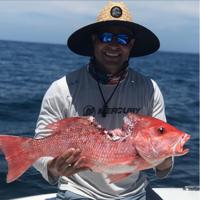
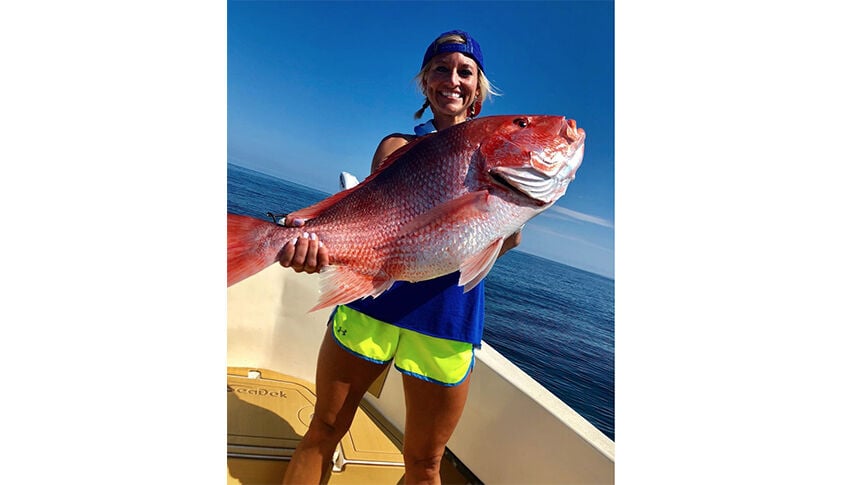
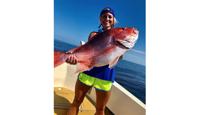
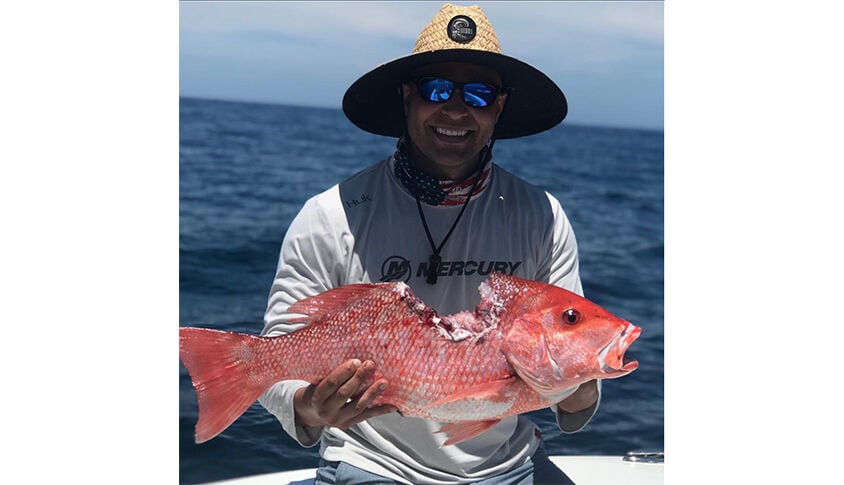
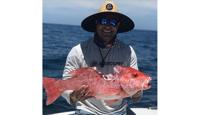
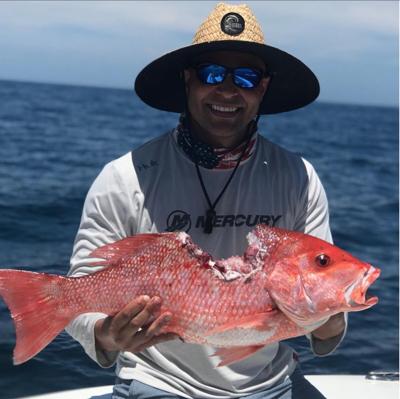
(0) comments
Welcome to the discussion.
Log In
Keep it Clean. Please avoid obscene, vulgar, lewd, racist or sexually-oriented language.
PLEASE TURN OFF YOUR CAPS LOCK.
Don't Threaten. Threats of harming another person will not be tolerated.
Be Truthful. Don't knowingly lie about anyone or anything.
Be Nice. No racism, sexism or any sort of -ism that is degrading to another person.
Be Proactive. Use the 'Report' link on each comment to let us know of abusive posts.
Share with Us. We'd love to hear eyewitness accounts, the history behind an article.